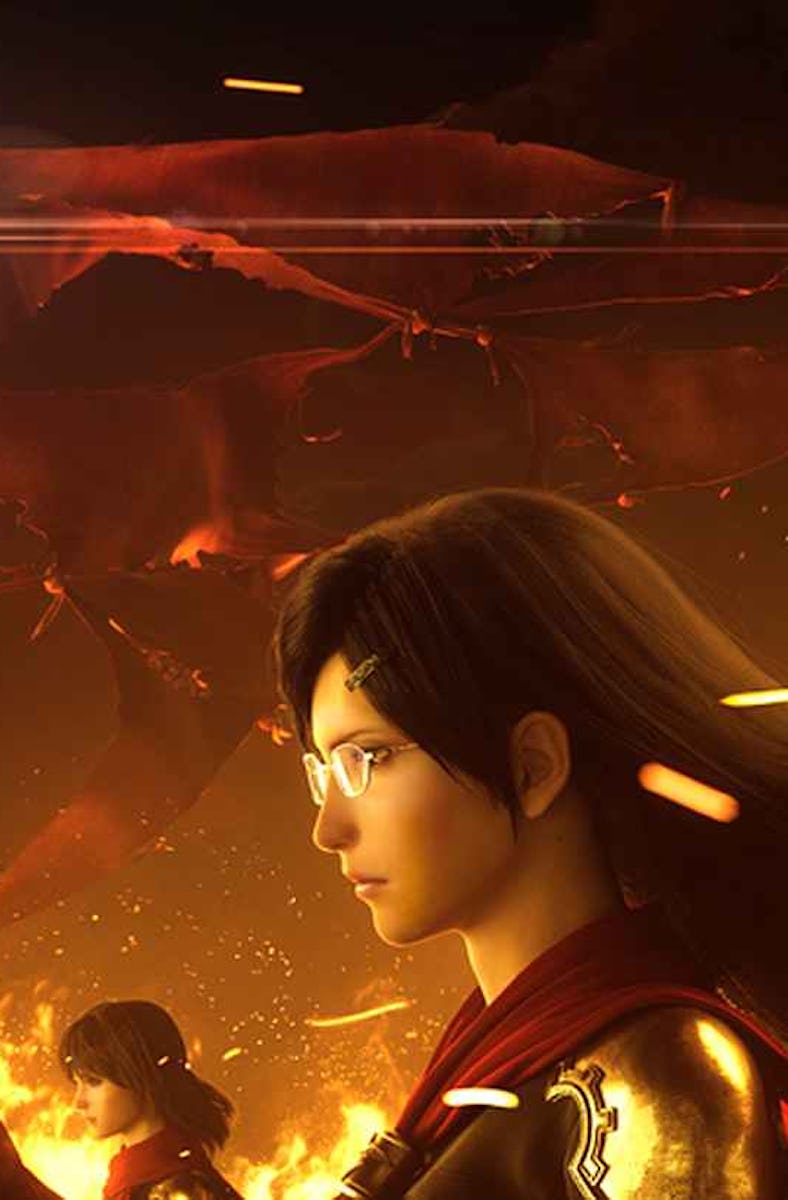Final Fantasy Type-0 Walked So Final Fantasy XVI Could Run
Top of the class.

On the now-decimated streets of a city under siege, a soldier stumbling along from wounds that will certainly end him is rescued by his faithful Chocobo, who also is covered in blood. Over the next couple of minutes, the two struggle to find some safety in the burning city. They don’t.
They are confronted by the opposing forces' soldiers, but at the last minute, allies rescue our two wounded protagonists. Even with healing magic, it’s too late to save the young soldier and his trusty Chocobo. They bleed out on the ground; just more casualties. It is, to put it bluntly, grim.
This is the first thing players encounter when starting Final Fantasy Type-0. The 12-year-old game is somewhat of a forgotten entry in Square Enix’s beloved RPG franchise, but its approach to a dark mature story feels especially relevant when compared to 2023’s Final Fantasy XVI. Where FF16’s approach falters, Type-0 offers something unique, and it’s worth revisiting or experiencing for the very first time.
To get it out of the way, FF16 is not the darkest Final Fantasy ever made. It does heavily posture toward meaningful discussions about conflict, but the way it tells that story fails to go deeper than the surface. There is a lot of blood, cussing, and the occasional scene that gestures at physical intimacy but it is mostly flash and no substance. It’s rated M, but Final Fantasy Type-0 was the first in the series to earn such a rating. Just think about that opening scene again and you’ll understand why.
Final Fantasy Type-0’s approach to grim, mature, bloody storytelling, conversely, feels more rooted in the unique world and characters of the game. Type-0 follows the members of a special military school in the nation of Rubrum called Class Zero. The group is made up of 14 students, all of whom fill the archetype of iconic Final Fantasy classes. This translates to Type-0’s combat, which allows you to switch between party members and control them in real-time against enemies. In some ways, it feels like a precursor to Final Fantasy 7 Remake’s combat system, though much simpler considering Type-0 was a PlayStation Portable game.
Much like Fire Emblem: Three Houses, they are children forced to be frontline soldiers in a violent conflict that they don’t truly know the reasons for. Despite the players' growing connection to each class member, they are essentially just pawns to be moved around for the benefit of the adults in charge.
Don’t get too attached to Class Zero, this game is a bummer.
Another element of Type-0 that makes its story more effective than that of FF16 is the setting. FF16 is a medieval fantasy, in which the biggest threats are the terrifying (but also undeniably cool-looking) eikons. Even with the graphical fidelity of the game, there is only so much destruction that can be represented in this world. Type-0 is an industrialized world of weaponized machines and heavily populated cities. Cities that are then constantly reduced to rubble by the machines. It mixes broken concrete with broken and bleeding bodies in a way that is all too recognizable in a modern world defined constantly by conflict.
The downfall of Type-0, however, lies in its story as well. It can feel too self-serious at times, and there are moments of dialogue that will make you cringe. Give it a break though, it came out in 2011. If you can get past the dialogue’s rough moments, though, Type-0 offers a unique vision within the franchise, one that takes an incredibly harsh and more grounded look at a more modern portrayal of conflict, one that vehemently argues that the cycles of endless meaningless destruction fall squarely on those in charge of the world’s nations while citizens perish in the streets.
It’s a somber game, but when compared to Final Fantasy XVI’s frankly formulaic approach to its story, Final Fantasy Type-0 feels like it has a unique vision all its own.